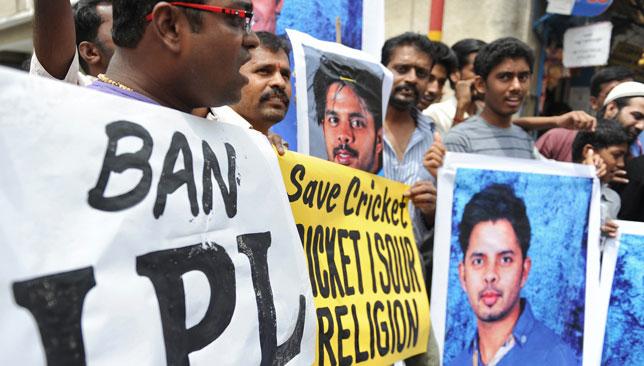
Fast bowler S Sreesanth has hogged a fair amount of television prime time and lead headlines in newspapers, effusive in his responses to all questions thrown at him, almost suggesting that his return to the Indian team was a matter of time.
To the impartial observer, it might appear somewhat lop-sided that all the attention has been focused on Sreesanth and not on his Rajasthan Royals team-mates Ankit Chavan and Ajit Chandila, who have been similarly exonerated. But that’s because Sreesanth is an India international and therefore carries all the ‘news value’ that media organisations covet.
— Sreesanth (@sreesanth36) July 28, 2015
His jubilation at being cleared of match and spot-fixing charges in the Indian Premier League by the Delhi lower court is understandable. Sreesanth had to spend excruciating weeks in jail when the story first broke and, for two years, has had to bear the stigma of being identified as a cheat.
A change from that position would be a source of happiness to anybody. However, legal relief from the lower courts may not only be short-lived, but could actually become a double-edged sword. Nonetheless, Sreesanth had become the face of the controversy and the scrutiny on him will remain as intense and relentless.
For Sreesanth, he should be advised to be cautious and circumspect. A return to action, even at first-class level, is not as simple as the hop-step-jump away Sreesanth or his supporters might like to believe. If anything, the route back – if at all – will be tortuous.
First of all, the Delhi police may push for a review of the discharge of the case. Sources in the capital’s police force have indicated that the prosecution lawyers made a hash of the matter, and that a review petition would not be so easy to dismiss.
– PAKvENG: Dubai Sports City to host both teams in UAE
– GALLERY: The eleven players to reach 10,000 ODI runs
– Cricket Xtra: Virat Kohli breathing life into India Test cricket
– Interview: Jacques Kallis on international retirement & T20s
Legal opinion differs from the contention of the police, however. The ‘incontrovertible’ evidence promised by them is in fact flaky according to those close to the trial.
Furthermore, the words of additional sessions judge Neena Bansal in her 175-page findings rang an ominous warning. “This is a case which raises serious concerns about the rampant rot that has set in sports, especially commercial sports, and adequacy of existing laws to deal effectively with the prevailing situation,’’ she observed.
This seems to separate the strictly legal position from the administrative one, which could prove the bigger stumbling block for the three players to return to active cricket.
The BCCI has already declared that the life ban imposed on Sreesanth and Chavan (no decision has been taken on Chandila since the Board’s investigations were incomplete) is independent of what the lower court has decreed.
While BCCI secretary Anurag Thakur stated that the matter will come up for discussion at the next meeting of the all-powerful Working Committee, redemption for Sreesanth & co. looks extremely difficult because the cricket establishment finds itself in a piquant situation on two counts.
Firstly, the findings of Ravi Sawani, who was the then-head of BCCI’s Anti-Corruption Unit, had affirmed conversations and the exchange of money between Sreesanth and accomplice Jijju which indicted them both. The BCCI will be extremely wary of disregarding its own findings.
Secondly, and this could queer the pitch further for the three players, the BCCI would have to disregard the Lodha and Mudgal reports, which it has publicly accepted “in toto’’.
Lifting the ban on the players immediately could be seen as an affront to what these two Supreme Court panels have adjudicated (the second installment of the Lodha report is expected within five months) in an effort to clean up Indian cricket. There is also the case of Hiken Shah, the Mumbai Ranji player suspended recently for allegedly making a proposal to a fellow player to spot-fix in IPL 2015. What happens to the case against him if based entirely on the BCCI’s internal findings?
Sreesanth and Chavan have found support from their state administrations and the Kerala and Mumbai Cricket Associations have plumped for Sreesanth and Chavan respectively. Albeit a trifle muted, this should be of some encouragement to them. But it could be a long, wait-and-see process for these players, rather than the instant return to legitimate cricket they so desperately crave.
What the BCCI does from here is the crux, not the legal position. Ultimately, the selection of players remains the prerogative of the Board and the courts have no role to play in this. Even if the instructions come informally, the return of any player to the fold can be obstructed.
All told, these three players are at the mercy of the BCCI.